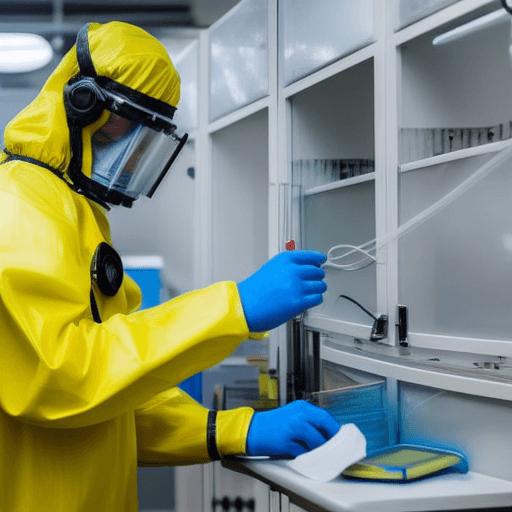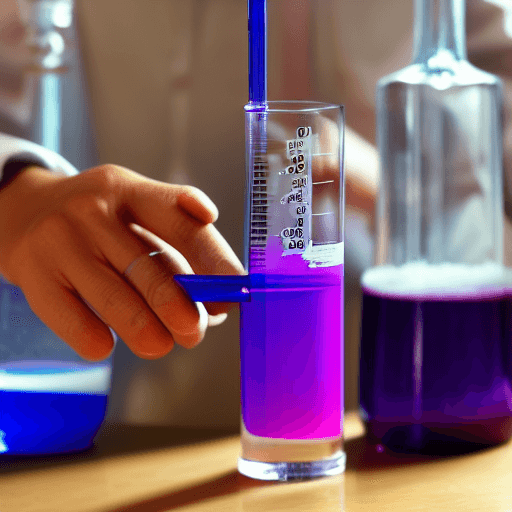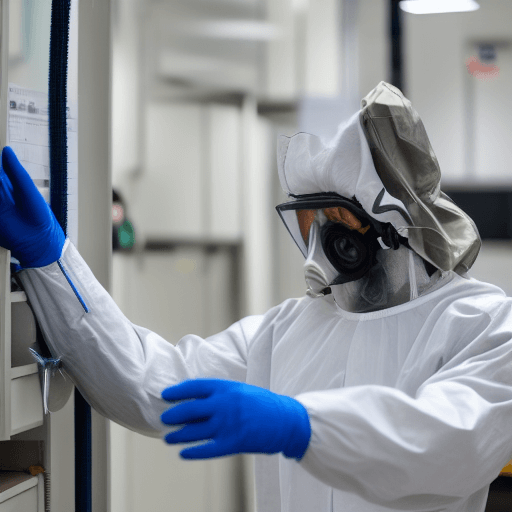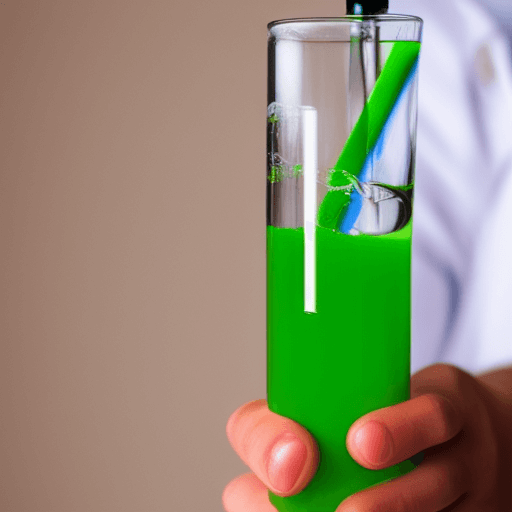Full List of Strong 22 Acids and Strong Bases
Do you know what the strongest acids and bases are?
Let’s go through a list of some of the strongest acids and bases that are known to man.
This information can be useful if you are looking for strong acids or bases to use in your lab, or if you are just curious about the topic.

There are many strong acids and bases.
Here is a list of some of the strongest acids and bases – strong acids are hydrochloric acid, sulfuric acid, and nitric acid while strong bases are sodium hydroxide, potassium hydroxide, and lithium hydroxide.
Here is a list of 22 common strong acids:
Strong Acids:
- Hydrochloric acid (HCl)
- Nitric acid (HNO3)
- Sulfuric acid (H2SO4)
- Perchloric acid (HClO4)
- Hydrobromic acid (HBr)
- Hydroiodic acid (HI)
- Chlorosulfonic acid (HClSO3)
- Chloric acid: HClO3
- Perchloric acid (HClO4) – powerful oxidizing agent
- Hydrofluoric acid (HF) – dissolves glass
- Hydrocyanic acid (HCN) – highly poisonous
- Hydrobromic acid (HBr)
- Hydroiodic acid (HI)
- Chlorosulfonic acid (HClSO3)
- Fluorosulfonic acid (FSO3H)
- Trifluoromethanesulfonic acid (CF3SO3H) – used as a catalyst
- Methanesulfonic acid (CH3SO3H) – used as an electrolyte in fuel cells
- Triflic acid (CF3SO3H) – very strong acid used in organic synthesis
- Fluoroantimonic acid (HSbF6) – one of the strongest known acids
- Magic acid (FSO3H-SbF5) – extremely strong “superacid”
- Chromic acid (H2CrO4)
- Pyrosulfuric acid (H2S2O7)
In general, acids formed from halogens like chlorine, fluorine, and bromine (especially coupled with sulfur) tend to be very strong due to the high electronegativity of these elements. Superacids are extremely strong proton donors. However, many strong acids are highly corrosive and dangerous to handle.
Here is a list of 12 common strong bases
Strong Bases:
- Lithium hydroxide (LiOH)
- Sodium hydroxide (NaOH)
- Potassium hydroxide (KOH)
- Rubidium hydroxide (RbOH)
- Cesium hydroxide (CsOH)
- Strontium hydroxide (Sr(OH)2)
- Barium hydroxide (Ba(OH)2)
- Sodium amide (NaNH2)
- Potassium amide (KNH2)
- Calcium amide (Ca(NH2)2)
- Ca(OH)2 (calcium hydroxide)
- RbOH (rubidium hydroxide)
The key trait of strong acids and bases is that they completely dissociate into their ions when dissolved in water. This allows them to release many more H+ or OH- ions which gives them stronger acidic or basic properties. Weak acids and bases only partially dissociate.
Explain It To A Child
Acids are chemicals that can eat away at other materials.
They can be dangerous to living things. Some acids are hydrochloric acid, sulfuric acid, and nitric acid. Bases are chemicals that can make acids weaker. Some bases are sodium hydroxide and potassium hydroxide.
List of strong acids and bases
There are a number of different acids and bases, each with its own unique properties.

Some of the most common acids include:
- Hydrochloric Acid (HCL) is a strong acid with a pH of 1.1 at 38% concentration. Hydrochloric Acid is extremely powerful and will begin to destroy living tissue instantly.
- Sulfuric Acid is another popular acid with a pH of 0.5, so this is recognized as one of the less intense or weaker acids. Sulfuric Acid is used, is in the production of fertilizers. When fertilizers are produced, Sulfuric Acid is used to remove impurities from the phosphate rock.
- Nitric Acid (HNO3) is a strong acid with a pH level of 1.2 at a standard commercial concentration of 68%. One way it is used is in the production of explosives. When explosives are produced, Nitric Acid is used to remove impurities from the nitrate rock.
These acids are all highly corrosive and can cause serious damage to living tissue.
Strong bases include sodium hydroxide and potassium hydroxide.
These bases are also highly corrosive and can cause severe burns.
It is important to be cautious when handling any of these substances, as they can be very dangerous.
Acids and bases are important chemicals that have a wide range of applications.
In general, acids are substances that release hydrogen ions (H+) when dissolved in water, while bases are substances that release hydroxide ions (OH-) when dissolved in water.
Acids can be found in nature and in the laboratory (created).
What are the strongest acids and bases known to man?

- The strongest acid known to man is hydrofluoric acid, which has a pH of 0.01. This means that it is one thousand times more acidic than pure water.
- The strongest base known to man is caustic soda, which has a pH of 14. This means that it is fourteen times more basic than pure water.
These extreme pH values can be dangerous to human health, which is why hydrofluoric acid and caustic soda are both carefully controlled substances.
These powerful substances can be dangerous if not used correctly, but they are essential for many everyday tasks.
How can you use strong acids and bases in your lab work or experiments?

- Strong acids and bases can be used to adjust the pH of a solution, and this can be helpful in ensuring that a reaction proceeds as intended.
- In addition, strong acids and bases can be used to clean glassware and other equipment.
- Finally, acids and bases can be used as indicators, such that the presence or absence of a particular color can be used to determine the pH of a solution.
Thus, strong acids and bases are important tools that every chemist should be familiar with.
Are there any dangers associated with strong acids and bases?
Strong acids and bases can be extremely dangerous if they are not handled correctly.
The most serious dangers occur when acids or bases come into contact with the skin or eyes, as they can cause severe chemical burns.
In addition, breathing in fumes from strongly acidic or basic solutions can also damage the lungs.
If swallowed, strong acids and bases can burn the esophagus and lead to serious health complications.
For these reasons, it is important to exercise caution when working with strong acids and bases and to always wear protective clothing and equipment.
How can you protect yourself from the dangers of strong acids and bases?
Strong acids and bases can be found in many household cleaning products.
They are also used in industrial settings for a variety of purposes.
While these substances can be very effective at removing stains and cleaning surfaces, they can also be extremely dangerous.
When coming into contact with skin, strong acids and bases can cause severe burns.
In some cases, these burns can even be life-threatening.
To protect yourself from the dangers of strong acids and bases, it is important to take some simple precautions.
- First, always wear gloves when handling these substances.
- Second, be sure to work in a well-ventilated area to avoid inhaling fumes.
- Finally, always follow the manufacturer’s instructions carefully to avoid accidents. By taking these simple steps, you can help to keep yourself safe when working with strong acids and bases.
Thus, if you are looking for strong acids or bases, these are some of the strongest that you can find.
Be careful when handling these chemicals, as they can be dangerous if not used properly.
Article Sources
Jacks of Science sources the most authoritative, trustworthy, and highly recognized institutions for our article research. Learn more about our Editorial Teams process and diligence in verifying the accuracy of every article we publish.